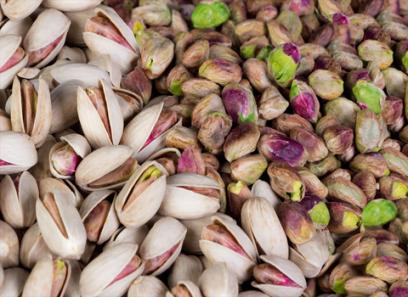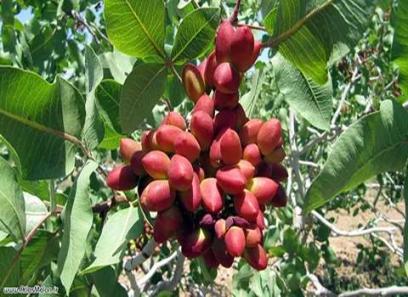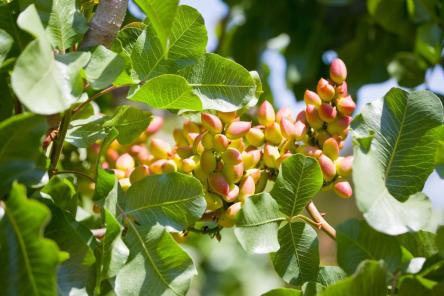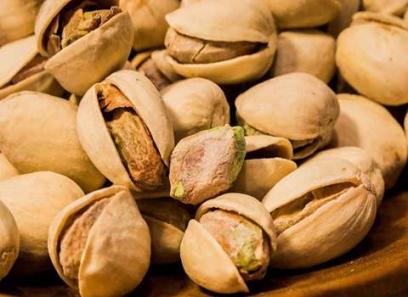Pistachio nuts, known for their delicious taste and nutritional benefits, are a popular snack enjoyed worldwide.
However, aside from the valuable nut, the outer hull of the pistachio also holds significant potential.
.
 . In recent years, this overlooked byproduct has gained attention for its various applications across different industries.
. In recent years, this overlooked byproduct has gained attention for its various applications across different industries.
The pistachio hull, composed of fibrous material and a vibrant purple pigment, is usually discarded during the processing of pistachio nuts.
However, innovative entrepreneurs and researchers have recognized its value and have sought ways to utilize this resource effectively.
One area where the pistachio hull shows promise is in the field of agriculture.
Its fibrous structure makes it an excellent candidate for plant mulch.
When added to soil, the hull acts as an organic matter that helps retain moisture, adds nutritional value, and improves soil structure.
This application not only promotes healthier plants but also reduces the need for synthetic fertilizers and conserves water, making it an eco-friendly solution for farmers. Furthermore, the purple pigment found in pistachio hulls, known as anthocyanin, has been discovered to possess antioxidant properties.
Anthocyanins are naturally occurring compounds that give fruits, vegetables, and flowers their vibrant red, purple, or blue colors.
This antioxidant activity makes pistachio hulls a potential ingredient in the pharmaceutical, food, and cosmetic industries.
In pharmaceuticals, antioxidants play a vital role in neutralizing harmful free radicals and reducing the risk of chronic diseases.
The anthocyanins found in pistachio hulls have been linked to improved cardiovascular health, decreased inflammation, and even potential anticancer effects.
These health benefits make them an attractive candidate for the development of nutraceutical supplements or functional foods.
The food industry also stands to benefit from pistachio hulls. The natural purple pigment can be extracted and used as a food coloring agent instead of synthetic alternatives.
This move towards natural, plant-based food colorings aligns with current consumer preferences for more wholesome and clean label products.
Additionally, pistachio hulls can be used in products like jams, jellies, and fruit tarts, where the natural coloring and antioxidant properties can enhance both the visual appeal and nutritional value.
..
 Lastly, the cosmetic industry has begun to explore the potential of pistachio hulls.
Lastly, the cosmetic industry has begun to explore the potential of pistachio hulls.
The antioxidant and anti-inflammatory properties of anthocyanins can help protect the skin from oxidative stress and improve overall complexion.
Incorporating pistachio hull extract in skincare products, such as creams and serums, could provide consumers with a natural and effective solution for achieving healthier skin.
While the potential applications of pistachio hulls are evident, there are still challenges to be addressed for their widespread adoption.
These include developing efficient and cost-effective extraction methods, ensuring a consistent supply of hulls, and establishing reliable distribution channels.
However, with increasing consumer demand for sustainable and natural ingredients, the pistachio hull could become a valuable resource that contributes to a more environmentally conscious and healthier future.
In conclusion, the pistachio hull, once considered a waste product in the pistachio industry, offers a range of exciting possibilities. Its fibrous structure makes it an ideal organic mulch for agriculture, while the purple pigment holds medicinal and cosmetic benefits.
By harnessing this resource, businesses can tap into new markets, meet consumer demand for sustainable products, and contribute to a more circular and efficient economy.
The future looks promising for pistachio hull utilization as its potential continues to be explored and harnessed.
As the demand for sustainable and eco-friendly solutions continues to grow, the importance of utilizing all aspects of a product, including byproducts like the pistachio hull, cannot be overstated.
With advancements in technology and increased awareness of the potential benefits, businesses have a unique opportunity to tap into this resource and create a profitable and sustainable venture.
…
 One key aspect of leveraging the potential of pistachio hulls is the development of efficient extraction methods.
One key aspect of leveraging the potential of pistachio hulls is the development of efficient extraction methods.
This involves finding the most effective and cost-efficient way to extract the valuable compounds, such as anthocyanins, from the hulls.
Researchers and entrepreneurs are constantly exploring new techniques, such as solvent extraction or enzymatic processes, to optimize the extraction process and maximize yield.
By finding innovative and scalable methods, businesses can ensure that the extraction of valuable compounds from pistachio hulls becomes a commercially viable endeavor.
Another challenge that needs to be addressed is the establishment of a reliable supply chain. With the increasing demand for pistachio nuts, the availability of hulls can be a limiting factor.
Collaborations between pistachio processors and businesses interested in utilizing the hulls can help ensure a consistent and sufficient supply of this valuable resource.
By creating partnerships and agreements, businesses can secure a steady stream of pistachio hulls and avoid potential disruptions in their production processes.
In addition to addressing extraction and supply challenges, it is crucial to establish efficient distribution channels for products derived from pistachio hulls.
Collaboration with distributors, retailers, and suppliers can help ensure that the derived products reach the target market effectively.
Establishing partnerships with companies that have expertise in distribution can help overcome logistical challenges and ensure broader market access.
By focusing on optimizing the distribution process, businesses can effectively reach consumers who are increasingly interested in sustainable and natural alternatives.
Moreover, raising awareness about the benefits of pistachio hull-derived products is essential for their successful adoption.
Educating consumers about the sustainable and functional aspects of these products can help generate demand and create a market for them.
Through marketing campaigns, informative content, and collaborations with influencers in the health, wellness, and sustainable living sectors, businesses can effectively communicate the value proposition of pistachio hull-derived products to target consumers. In conclusion, the pistachio hull has immense untapped potential, offering a range of possibilities across industries.
From agriculture to pharmaceuticals, food, and cosmetics, this byproduct can be utilized to create sustainable and value-added products.
While there are challenges to overcome, such as extraction methods, supply chain, and distribution, businesses that are able to address these challenges effectively will be well-positioned to capitalize on this promising resource.
With the growing demand for sustainable and natural alternatives, the future of pistachio hull utilization looks bright, promising a greener, healthier, and more environmentally conscious world.




